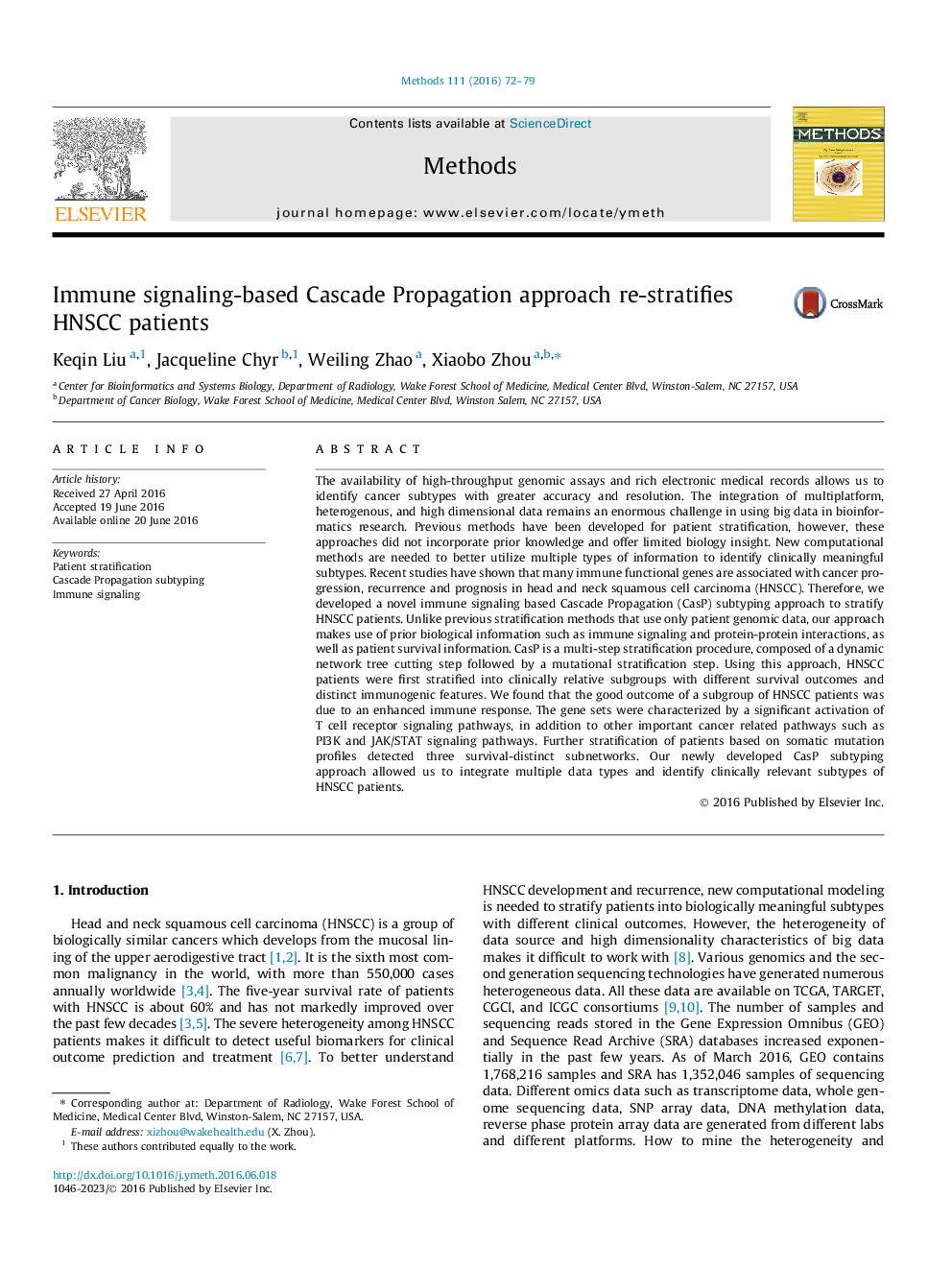| Article ID | Journal | Published Year | Pages | File Type |
|---|---|---|---|---|
| 5513501 | Methods | 2016 | 8 Pages |
â¢Novel immune signaling based Cascade Propagation (CasP) subtyping approach.â¢First time signaling and survival information are used to stratify HNSCC patients.â¢Discovered multiple subtypes of HNSCC cancers with different immunogenic features.â¢Detected subnetworks with distinct somatic mutation profiles and survival outcomes.
The availability of high-throughput genomic assays and rich electronic medical records allows us to identify cancer subtypes with greater accuracy and resolution. The integration of multiplatform, heterogenous, and high dimensional data remains an enormous challenge in using big data in bioinformatics research. Previous methods have been developed for patient stratification, however, these approaches did not incorporate prior knowledge and offer limited biology insight. New computational methods are needed to better utilize multiple types of information to identify clinically meaningful subtypes. Recent studies have shown that many immune functional genes are associated with cancer progression, recurrence and prognosis in head and neck squamous cell carcinoma (HNSCC). Therefore, we developed a novel immune signaling based Cascade Propagation (CasP) subtyping approach to stratify HNSCC patients. Unlike previous stratification methods that use only patient genomic data, our approach makes use of prior biological information such as immune signaling and protein-protein interactions, as well as patient survival information. CasP is a multi-step stratification procedure, composed of a dynamic network tree cutting step followed by a mutational stratification step. Using this approach, HNSCC patients were first stratified into clinically relative subgroups with different survival outcomes and distinct immunogenic features. We found that the good outcome of a subgroup of HNSCC patients was due to an enhanced immune response. The gene sets were characterized by a significant activation of T cell receptor signaling pathways, in addition to other important cancer related pathways such as PI3K and JAK/STAT signaling pathways. Further stratification of patients based on somatic mutation profiles detected three survival-distinct subnetworks. Our newly developed CasP subtyping approach allowed us to integrate multiple data types and identify clinically relevant subtypes of HNSCC patients.
